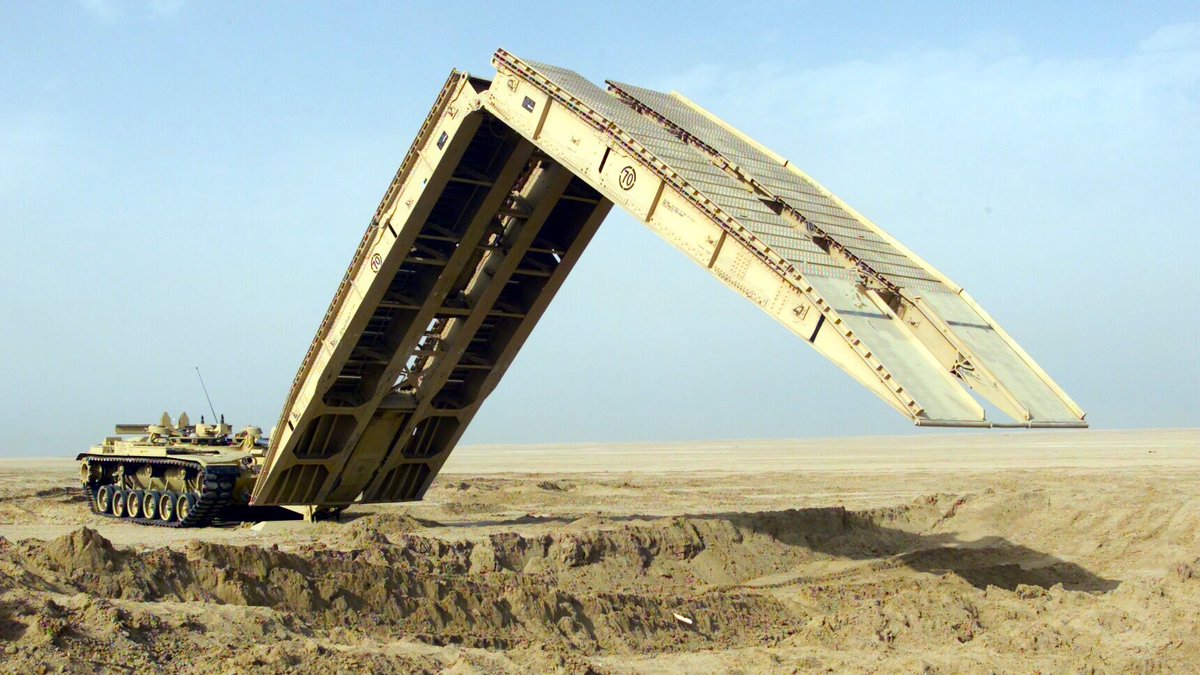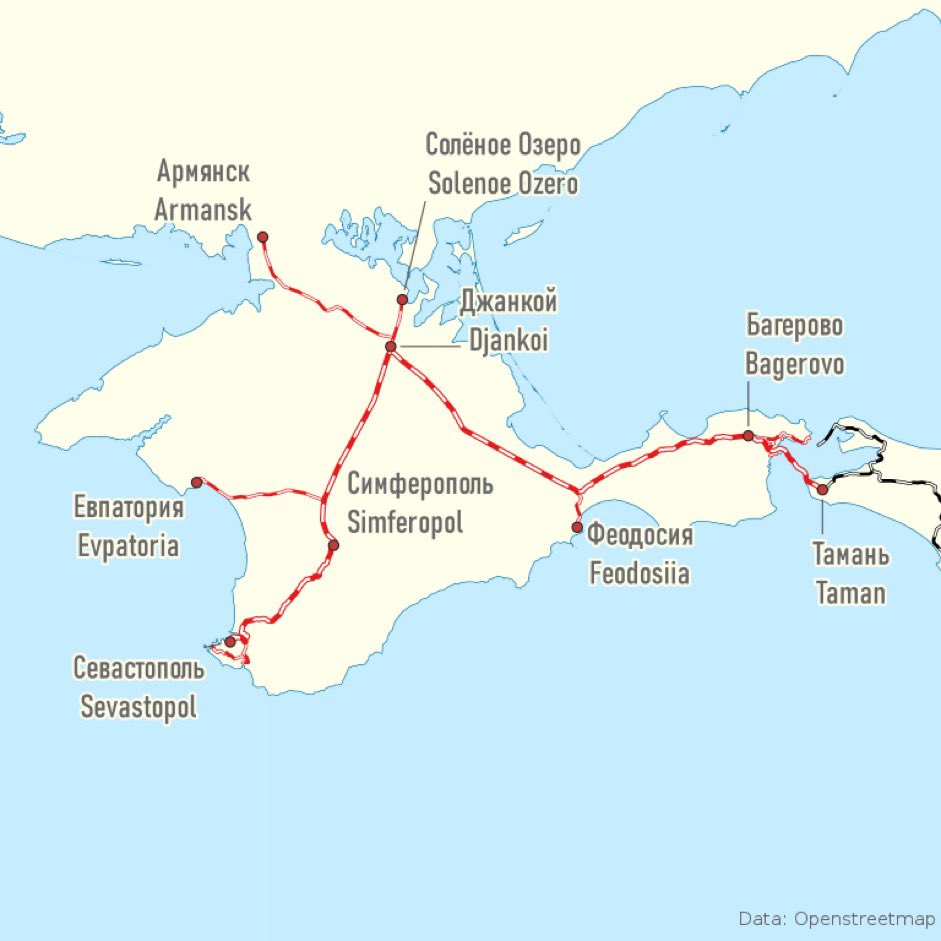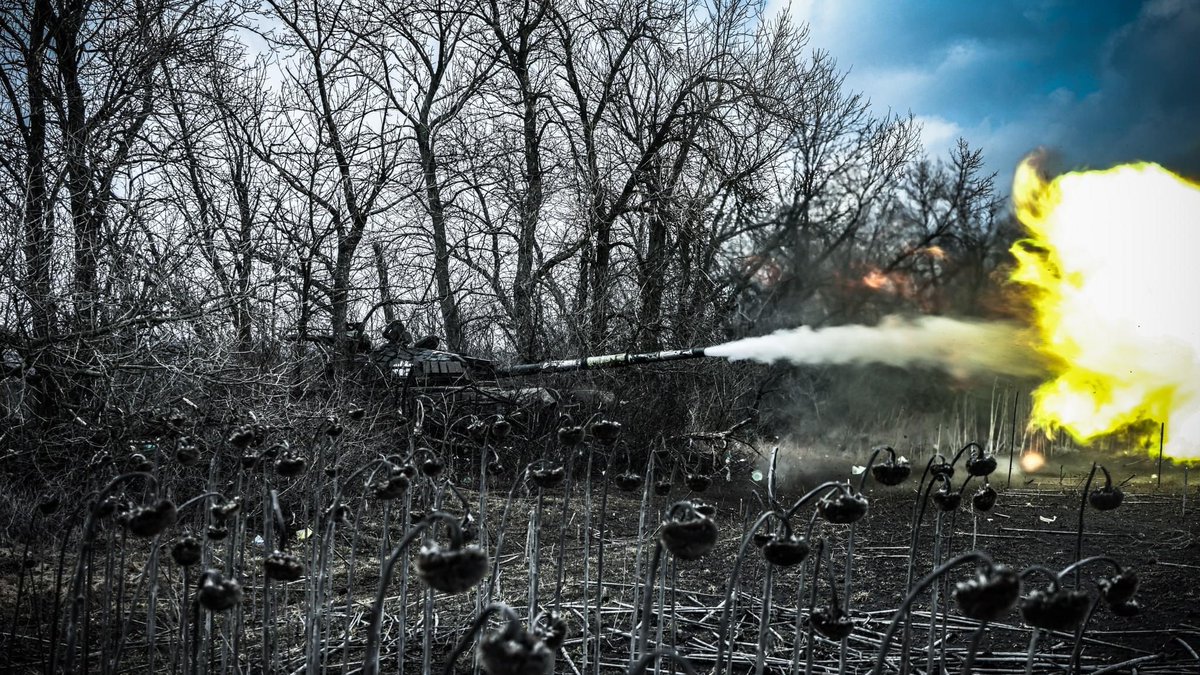For those who follow the provision of United States’ military assistance to Ukraine closely, over the past several months a new pattern in support has emerged. A key aspect of this new pattern is the provision of battlefield mobility capabilities. 1/25 🧵 

2/ Reviewing the multiple US aid packages since 14 October 2022, there has been a large effort to equip combat engineers in their coming efforts to identify, reduce and move through the dense obstacle zones constructed by the Russian Army in eastern and southern Ukraine.
3/ Demolitions munitions, obstacle reduction & mine clearance equipment, mobile bridging capabilities as well as Mine Resistant Ambush Protected Vehicles & artillery delivered anti-tank mines, have featured on the publicly released lists of American supplied military assistance. 

4/ This uplift in mobility & survivability support to the Ukrainian Army tells us that not only have battlefield conditions changed since the beginning of the war, but that the coming offensives by the Ukrainians will look different to those that have been conducted previously.
5/ The 1st reason for this is that the Ukrainians are facing a different Russian Army now than compared to 2022. Not only does it have a different commander in General Gerasimov, but there is a different balance of professional and mobilised troops.
6/ While much ink has been spilled about how mobilised troops are better at defensive than offensive operations, the reality is that the coordination of a scheme of defence over several hundred kilometres of front line is still a complex and fraught undertaking.
7/ The Russians have constructed multiple layers in their defensive zones. Some of these will be augmented with obstacles including anti-tank ditches, mines, wire and dragon’s teeth. There will be different densities of troops in each zone.
8/ We can reasonably assume that the Russians will have reserves in troops and munitions for counter attack and counter penetration missions across the frontline. They will have an ISR plan focused on detecting & interdicting concentrations of Ukrainian troops.
9/ While this might paint a picture of Russian military professionalism that has rarely been glimpsed in this war, it is militarily prudent to make assumptions along these lines. It is always better to prepare for a more dangerous opponent rather than a less dangerous one.
10/ Another difference with the coming offensives will be Ukrainian force structure. Over the past few months, they have been raising, equipping, manning and training three new formations for the coming offensives. 

11/ These new formations, which are likely to resemble reinforced combined arms divisions, have probably been the beneficiaries of the large numbers of armored and motorised equipment provided by the US and Europe in the last few months.
12/ The new division-size organisations introduces a new and more complex combined arms formation to the Ukrainian order of battle. They are much more capable but it will also take time to train commanders and staffs to employ them effectively.
13/ That said, the Ukrainians have demonstrated continuously throughout this war how quickly they can absorb new knowledge and systems. I expect something similar with their uptake of division level operations.
14/ A 3rd difference from what has come before is the dense series of obstacle zones that the Russians have constructed in Ukraine. Good armies try to avoid being committed to breaching through such areas because that is exactly what the enemy wants you to do.
15/ However, if they lie in the path of an important operational objective, there are times when breaching and fighting through such obstacle zones cannot be avoided. And there should be no doubt about the complexity of such operations.
16/ Indeed, there is no military endeavour that is more difficult to plan, orchestrate and execute than combined arms obstacle breaching. It requires every element of an army’s combined arms team - and air forces - to overcome them and proceed to taking an objective.
17/ A 4th reason why the future offensives will be different is because both sides have continuously evolved - and improved - capabilities for reconnaissance and strike. Both sides now employ an almost countless number of drones of many types as well as loitering munitions. 

18/ The number and density of such systems has increased throughout the war. Both sides now operate in an environment of almost pervasive surveillance, where the ‘detection to destruction’ time has been significantly reduced.
19/ This means that deception before the operation will be vital for the Ukrainians to conceal key objectives and axes of advance, logistics holdings, troop concentrations as well as the locations of critical items such as engineer equipment and artillery.
20/ A final reason the coming offensives will be different is because of the strategic stakes involved. The Russians seek to draw out the conflict (I actually think this is a flawed assumption on Putin’s part, but that is another article).
21/ The Ukrainians know that the strategic clock is possibly ticking in Washington DC. With an election year likely to distract the war principle aid provided in 2024, this year will be decisive for Ukrainian battlefield operations.
22/ The offensives to come must once again show the people of the west that not only is Ukraine worth supporting, but with ongoing military assistance in 2023 and beyond, they can defeat the Russian invasion.
23/ Read a more detailed version of this thread in my latest substack post: mickryan.substack.com/p/the-coming-f…
24/ Whether launched tomorrow, next week or next month, the Ukrainian offensives will be different to those we have already seen. But, the Ukrainians will continue to show us that their sense of purpose, adaptive mindset & pride in defending #Ukraine makes them unbeatable. End. 

25/ Thank you to the following for the links and images used in this thread: @Osinttechnical @Militarylandnet @DefenceU @Liberov @TDF_UA
• • •
Missing some Tweet in this thread? You can try to
force a refresh

 Read on Twitter
Read on Twitter









